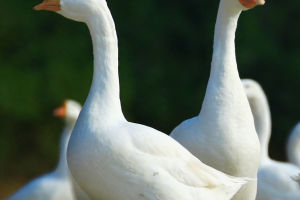Sea turtles are the largest in the "family" of turtles. The thick carapace is more than one meter long and weighs 150-180 kg. It lives in the sea year after year, and only during the annual breeding season does the female crawl ashore to lay eggs.
Sea turtles appeared on the earth more than 200 million years ago and are well-known "living fossils". Sea turtles live in subtropical offshore waters. Most sea turtles live in shoal waters along the coast. Some species of sea turtles live in food-rich waters in winter and make a long migration during the spawning season.
Sea turtles mainly eat plant foods such as seaweed, and sometimes animal foods such as fish and shrimp. Turtles have no teeth and use keratinized mouths to chew their food.
Due to long-term adaptation to life in the sea, there are glands that expel salt at the back of the eye socket, which can expel excess salt from the body through the edge of the eye.
Turtles are actually good swimmers, and their long forelimbs act like paddles, making them well-suited for life in the water. Sea turtles have a migratory habit. After the sea temperature drops, they will migrate to warmer waters to resist the cold.
Every year from April to October is the peak breeding season for sea turtles. During the estrus period, they are very active, actively looking for their "mates", and then both chase and play, and spend a sweet "love life".
Turtles can sense the Earth's magnetic field and use it to plan their course of action. They can even travel thousands of miles back to their birthplace to breed.
The birth of sea turtles is usually at night, when the female turtles quietly crawl to the shore to find a suitable place to lay their eggs. Female sea turtles lay more than 100 eggs each year, but they have to lay them several times.
After laying eggs, it carefully covers the eggs with sand, fills in the egg pits, hides them without leaving any traces, and hatches with sunlight. After about two months, the hatchlings emerge from their shells.
The sex of sea turtles is determined by the temperature at which they hatched. In warm conditions, females will be produced, and in cold conditions, males will be produced.
Sea turtles have a very long lifespan, some can live for more than 100 years. Turtles that eat plants generally live longer than other turtles. For example, tortoises living on tropical islands in the Pacific and Indian Oceans feed on grasses, wild fruits and cacti and live up to 300 years.
The long lifespan of sea turtles is related to his growth habits and breathing patterns. A turtle has a hard shell, so its head, belly, limbs and tail are well protected from external damage.
At the same time, turtles also have a habit of lethargy. They need about 10 months of sleep a year, including hibernation and hibernation. This results in a slower metabolism and lower energy expenditure.
And the lifespan of a turtle is also related to the way it breathes. Because the turtle has no intercostal muscles, it must use the lower part of its mouth to move up and down to draw air into its mouth and send it to its lungs when breathing.
When it breathes, its head and feet expand and contract, and its lungs also breathe. This special breathing action is also the reason why sea turtles can live so long.


